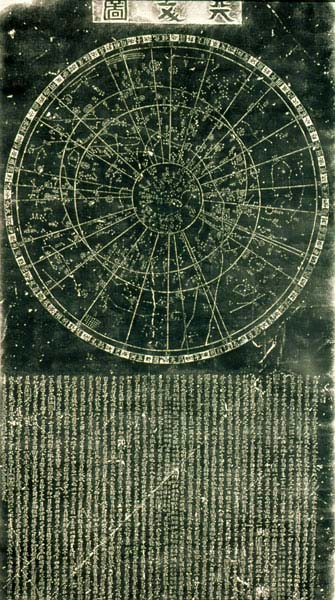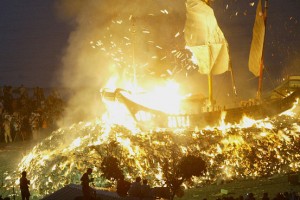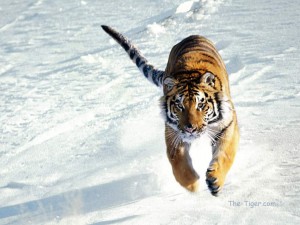Unity and Harmony
/ The Chinese Character "ping"
The Chinese Character "ping"How is this for dark irony? The Chinese civil war which took place in the 1850's and 60's was call the Great Peace Rebellion (Tai Ping) and is ranked the world's second bloodiest war of the last 500 years. The Chinese character 'ping' is a common tattoo in the San Francisco. I suppose it would be stating the obvious to point out that the term 'ping,' which is usually translated into English as 'peace,' doesn't really mean peace.
The idea of peace resists description because it is so deeply ingrained in the most basic concepts and metaphors of our civilization. "Peace is just...like, ....peace man, you know?" Because of this it is easy to unconsciously project our notions of peace onto other cultures. The Chinese idea of peace as best I've been able to glean, is a combination of yi (unity) and he (Harmony). And naturally that is the name of another Chinese War, the Boxer Rebellion which is known as the Yi He Uprising.
 What is going on here? Could this unity harmony thingy explain why Google was able to find the compromise of moving it's operations to Hong Kong?
What is going on here? Could this unity harmony thingy explain why Google was able to find the compromise of moving it's operations to Hong Kong?Yi and he are the two most important concepts in Chinese Martial Arts. But before I get into that let's examine them more generally. The Chinese calendar seems like a good place to start. It is thousands of years old. Chinese governments have been publishing a calendar for the whole country almost continuously since the Han Dynasty (1st Century B.C.E.). At first glance it is extremely complex because it is a composite of 10's perhaps 100's of local and ethnic calendars. To name just a few, there is the lunar calendar, there is the stem-branch system of 10's and 12's that make up a 60 day cycle, there are the 28 Lunar Mansions which are also called constellations and since 7 goes into 28 they track with our 7 day weeks, there is the Islamic Calendar subsumed inside the larger calendar, there is a 72 day Yijing divination sequence which reverses its direction at the solstice and equinox, and there are many many more.
When I think of all the little local and ethnic calendars subsumed in the big calender I think of a story I heard about Californian Indians having a calendar which reminded them when it was time to go pick wild onions. By picking onions in particular locations at particular times they loosened the ground and initiated the growth of more onions. They were making gardens in the wilderness. (But of course it wasn't the wilderness to them.) These sorts of ritual cycles are embedded in the Chinese calendar along with innumerable locals celebrations and sacrifices to gods, spirits and ancestors. It was all in one calendar thus we could say there was unity (yi). Harmony is a broad concept, but in a basic sense, harmony is achievable through not scheduling a mandatory meeting for work or school on either of the first two nights of Passover! (To give an example from my own life.) Harmony is achievable because our conduct, our activities, and our rituals, take place with awareness, sensitivity, and responsiveness to a bigger context or environment.
Any attempt by diplomats or corporate representatives to negotiate with the Chinese government must begin with some understanding of unity and harmony. Sitting down at a negotiating table with a powerful Chinese representative without incorporating the concept of unity and harmony would be like meeting an American representative without bringing along the concept of "sitting down at the negotiating table!' It's that basic.
I know I said above that I would explain the importance of unity and harmony in martial arts, but it's not easy to explain. I fear words are likely to fail me but here goes.
Unity means inclusiveness. Harmony means simultaneous individuation. They work together. But in trying to explain them I get stuck. I could go to Daoist cosmology and say that huntun, totally undifferentiated chaos, approaches unity. When everything is undifferentiated we could almost stay it's a single thing. But it is not quite unity because unity can be conceived of as having boundaries, like a country or an egg, whereas huntun has no boundaries.
 And of course the Taiji symbol itself is the most ubiquitous image of harmony. It graphically dipicts simultaneous individuation--two distinct things working together inside of each other. But that just starts to sound weird, so lets have an example.
And of course the Taiji symbol itself is the most ubiquitous image of harmony. It graphically dipicts simultaneous individuation--two distinct things working together inside of each other. But that just starts to sound weird, so lets have an example.Imagine just an egg, without air or ground. Make it a mammal egg so that the shell is soft. Unity is the egg, the totality of your awareness is the egg. The egg is all there is. The egg can have a distinct shell, yolk and white, or it can be scrambled. It's still just an egg, it's still a unity and it's still all there is. In Daoist meditation there is this notion that we can map stillness as a transition between two types of experience which are actually one--the egg with a shell, a white and a yolk, and the egg scrambled.
In the internal martial arts, taijiquan, xingyi, bagua, we are an egg. The totality of our awareness, our sense of where we are and the boundaries of our perception, is an egg. Our physical mass is the yolk (jing). The egg white is clarity and movement, it is what animates us (qi). We could almost say that the egg white is inspiration and motivation; however, in Daoist cosmology this egg white is just the medium for animation--inspiration comes from Dao, it does not have any apparent origin.
 The shell of the egg is the boundary of our perception. When we practice internal gongfu the shell is the sky and the horizon--as we see, feel, hear, smell and imagine it. We call this shen (spirit) in martial arts. It contains the yolk and the egg white. In basic training we develop the yolk (the body) so that it is smooth, round, and able to shift and change like a thick liquid which can expand and condense in all directions. Then the yolk itself becomes so quiet that we forget it! We forget it like we would forget our own body in the presence of a beauty beyond words. We move only the egg white, shifting and swirling within an enormous shell, and the body follows without effort or inhibition. That's harmony.
The shell of the egg is the boundary of our perception. When we practice internal gongfu the shell is the sky and the horizon--as we see, feel, hear, smell and imagine it. We call this shen (spirit) in martial arts. It contains the yolk and the egg white. In basic training we develop the yolk (the body) so that it is smooth, round, and able to shift and change like a thick liquid which can expand and condense in all directions. Then the yolk itself becomes so quiet that we forget it! We forget it like we would forget our own body in the presence of a beauty beyond words. We move only the egg white, shifting and swirling within an enormous shell, and the body follows without effort or inhibition. That's harmony.
 Beijing Opera (Jingju) has as its most basic physical training something called "da" literally hitting or striking. The warm ups I learned as a kid studying Northern Shaolin are the very same ones used in Beijing Opera. The stage roles are divided into either martial or civil categories (wu and wen). Extensive weapons training is given to everyone because much of the traditional repertoire involves depicting historic conflicts and battles. Probably the best piece of evidence is the most famous Chinese Opera star of the 20th Century, the female impersonating dan
Beijing Opera (Jingju) has as its most basic physical training something called "da" literally hitting or striking. The warm ups I learned as a kid studying Northern Shaolin are the very same ones used in Beijing Opera. The stage roles are divided into either martial or civil categories (wu and wen). Extensive weapons training is given to everyone because much of the traditional repertoire involves depicting historic conflicts and battles. Probably the best piece of evidence is the most famous Chinese Opera star of the 20th Century, the female impersonating dan  "Mean people" were used for everything from entertaining visiting dignitaries, to weddings, to the most sacred rituals of a region. "Opera Families" were profane outsiders who lived in separate districts or separate villages and yet were paid to entertain and purify--to bring order and expel evil.
"Mean people" were used for everything from entertaining visiting dignitaries, to weddings, to the most sacred rituals of a region. "Opera Families" were profane outsiders who lived in separate districts or separate villages and yet were paid to entertain and purify--to bring order and expel evil. Which brings us back to martial arts. Martial arts were used extensively in these rituals. It seems almost too obvious that the basic physical training for popular and rarefied physical theater in China was in fact martial arts training. Each region had it's own style of gongfu (kung fu) and it's own style of theater (ci). But the basic training was the same. It could be refined for either fighting, performing, or both.
Which brings us back to martial arts. Martial arts were used extensively in these rituals. It seems almost too obvious that the basic physical training for popular and rarefied physical theater in China was in fact martial arts training. Each region had it's own style of gongfu (kung fu) and it's own style of theater (ci). But the basic training was the same. It could be refined for either fighting, performing, or both. How do laws effect the way we train our bodies? Drugs, hormones, and steroids can dramatically change the way we train. We've all seen the pictures. Pain is one of the big factors that stops people from training yet some painkillers are totally legal and some are not. The whole steroid issue is confusing because one of the main reasons people take them is to train past the point at which pain would normally stop a person form training, so why are painkillers OK and steroids aren't? Oh yeah side effects, like painkillers don't have those. Many people are now aware that Ma Huang, an important herb in the Chinese Medical Pharmacopeia, is now illegal in the US because it was being used as a steroid, and one person gave themselves a heart attack. Please give us our Ma Huang back!
How do laws effect the way we train our bodies? Drugs, hormones, and steroids can dramatically change the way we train. We've all seen the pictures. Pain is one of the big factors that stops people from training yet some painkillers are totally legal and some are not. The whole steroid issue is confusing because one of the main reasons people take them is to train past the point at which pain would normally stop a person form training, so why are painkillers OK and steroids aren't? Oh yeah side effects, like painkillers don't have those. Many people are now aware that Ma Huang, an important herb in the Chinese Medical Pharmacopeia, is now illegal in the US because it was being used as a steroid, and one person gave themselves a heart attack. Please give us our Ma Huang back! There are tons of exercise inventions, toys and apparatus that are illegal because someone hurt themselves and sued. I suspect we are missing out on some brilliant training equipment and other fun stuff because no manufacturer was will to take the risk.
There are tons of exercise inventions, toys and apparatus that are illegal because someone hurt themselves and sued. I suspect we are missing out on some brilliant training equipment and other fun stuff because no manufacturer was will to take the risk. There are two parts to it. The first is basic physical education. If a weighted knee rolls inward and the foot turns outward simultaneously, the Anterior Cruciate Ligament is in danger of breaking. Everyone needs to know this. Just telling people to keep their knee over their toe is not enough information. Students need to understand what they are training to avoid. But a knee really can move in a complete circle around the foot as long as forces are not putting that ligament at risk. In fact it is a good idea to train this way because it teaches the student to keep their whole foot on the ground, there-by avoiding rolling over on the ankle and ma
There are two parts to it. The first is basic physical education. If a weighted knee rolls inward and the foot turns outward simultaneously, the Anterior Cruciate Ligament is in danger of breaking. Everyone needs to know this. Just telling people to keep their knee over their toe is not enough information. Students need to understand what they are training to avoid. But a knee really can move in a complete circle around the foot as long as forces are not putting that ligament at risk. In fact it is a good idea to train this way because it teaches the student to keep their whole foot on the ground, there-by avoiding rolling over on the ankle and ma ny other possible strains.
ny other possible strains. With the knee forward of the toe and the Achilles tendon fully extended the heel can even come off the ground. This is used in Bagua Zhang's so called "lower basin" training, and in Daoyin dragon walk. These two are advanced techniques and need to be introduced over time, but they are safe.
With the knee forward of the toe and the Achilles tendon fully extended the heel can even come off the ground. This is used in Bagua Zhang's so called "lower basin" training, and in Daoyin dragon walk. These two are advanced techniques and need to be introduced over time, but they are safe. Some of the old masters were brutal. And it is probably true that people got badly hurt every once in a while. I'm happy to leave that in the past. But there is also a kind of rough confidence about the body which comes from tens of thousands of hours of practice. To the untrained eye that confidence may look dangerous or risky when in fact it is a gift and a treasure.
Some of the old masters were brutal. And it is probably true that people got badly hurt every once in a while. I'm happy to leave that in the past. But there is also a kind of rough confidence about the body which comes from tens of thousands of hours of practice. To the untrained eye that confidence may look dangerous or risky when in fact it is a gift and a treasure.
